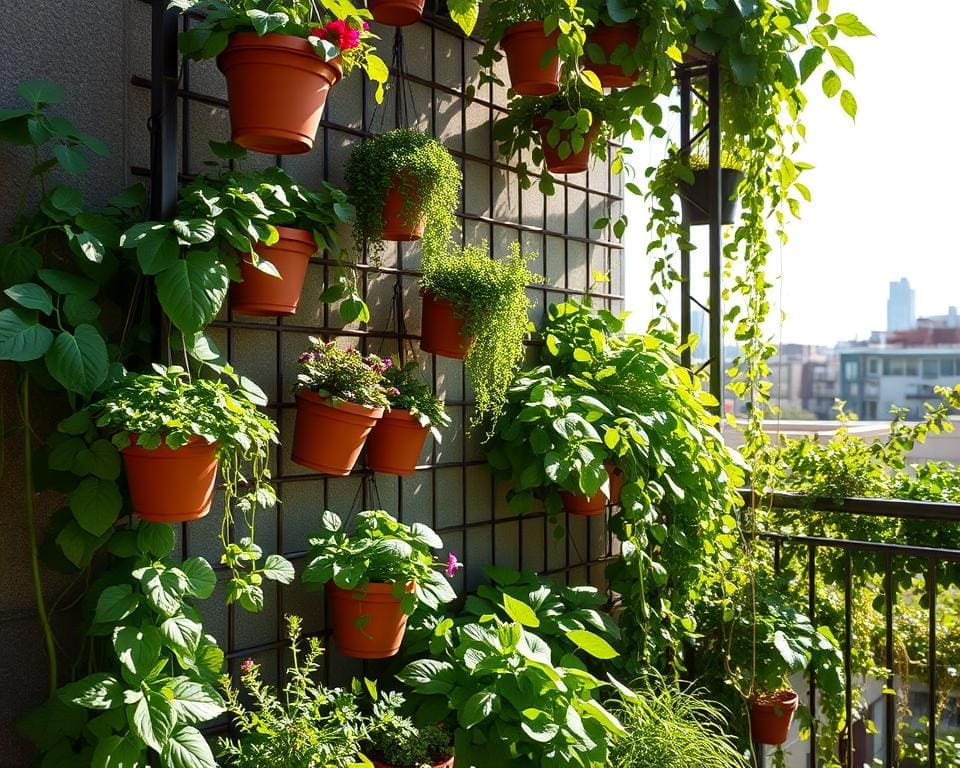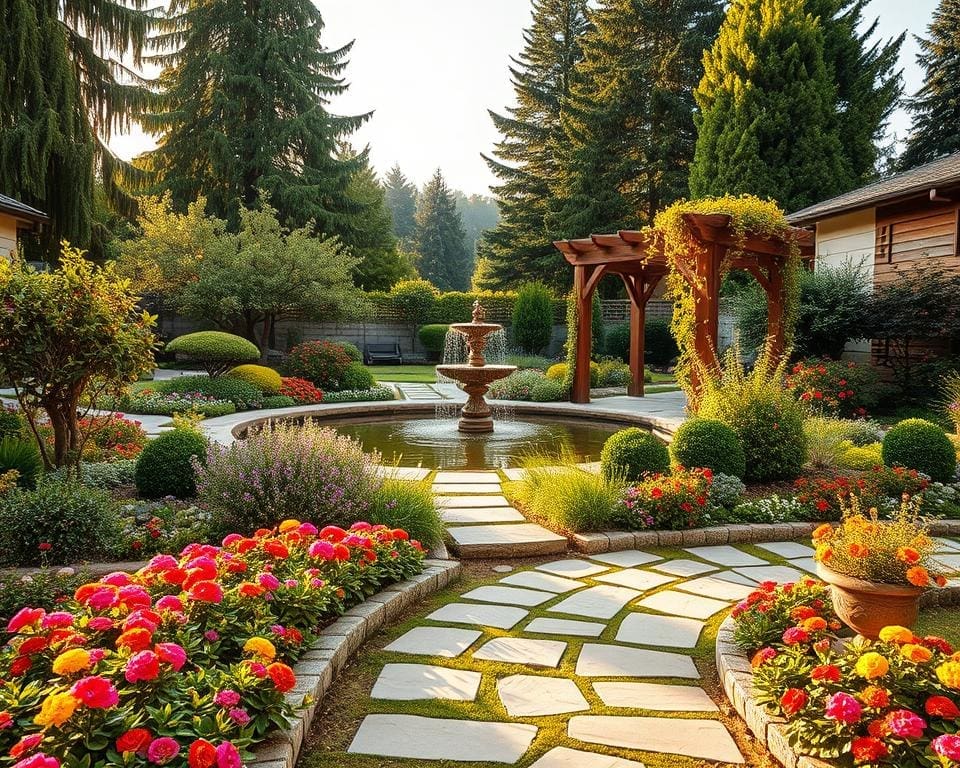Creating a sense of spaciousness in a small garden is an art that many gardeners aspire to master. By employing thoughtful small garden design techniques, one can transform modest outdoor spaces into serene retreats that feel expansive and inviting. Key to achieving this illusion lies in the strategic selection of materials and design choices that enhance the perception of space. Important factors such as light, colour schemes, and the overall functionality of the garden play pivotal roles in this endeavour. Embracing these factors can elevate your garden experience, turning it into a delightful oasis through effective garden space optimisation.
Utilising Vertical Space for Expansion
Transforming a small garden into an inviting oasis requires innovative approaches, particularly the art of vertical gardening. By utilising vertical space, gardeners can expand their planting area while maintaining a stylish aesthetic. Vertical planters, such as wall-mounted pots and tiered plant racks, play a vital role in making the most of limited ground space.

Choosing Vertical Planters
When selecting vertical planters, consider options that suit both your plants and available space. Wall-mounted planters provide an opportunity to cultivate herbs or succulents without occupying valuable floor area. Innovative designs from brands like GreenStalk and GroVert offer practical solutions that enhance vertical gardening efforts. These planters can be arranged to create a stunning visual display while maximising space.
Vertical Garden Ideas for Small Spaces
Creative vertical garden ideas are abundant, perfect for those eager to enhance their outdoor experiences. Consider constructing an herb wall, which not only makes cooking more enjoyable but also adds a delightful aroma to your garden. Flower towers can introduce vibrant colours, drawing the eye upward and creating the illusion of a larger space. Embracing these space-saving garden ideas allows you to enjoy the joys of gardening while optimising your limited area.
Strategic Plant Selection
Choosing the right plants is essential for creating a vibrant and airy atmosphere in a small garden. Strategic plant selection enhances the visual appeal while optimising space. Focusing on both climbing plants and smaller flora can result in a garden that feels not only abundant but also well-organised.
Opting for Climbing Plants
Climbing plants stand out as an excellent choice for vertical growth, drawing the eye upwards and thereby creating the illusion of a larger space. Varieties such as clematis and jasmine are popular, offering lush foliage and delightful blooms. These plants thrive in confined spaces, allowing for layered planting that adds depth. Their growth habit enables gardeners to decorate walls and trellises without occupying valuable ground space.
Mixing Scale with Smaller Flora
Integrating smaller garden plants into your design plays a crucial role in maximising space efficiency. Consider dwarf varieties, which offer a delightful, compact appearance, while low-spreading plants add a ground cover effect. Following carefully curated plant selection tips ensures a balanced look without overcrowding. Mixing different scales provides texture and diversity, contributing to a dynamic garden environment.
What makes a small garden feel spacious?
Transforming a small garden into a space that feels expansive involves clever design choices that play with both colour and texture. Employing distinct zones within the garden can create depth, encouraging exploration and interaction. This multidimensional approach not only enhances the visual appeal but also fosters a sense of connectedness with nature.
Creating Zones with Colour and Texture
The choice of garden colour schemes significantly impacts how spacious your garden appears. Lighter hues tend to create an airy feeling, while rich tones can define areas and create intrigue. By using contrasting garden textures, from smooth pebbles to lush greenery, one can delineate different zones, inviting visitors to discover various parts of the garden. Effective use of plants, paving, and garden ornaments will lead to a tapestry that emphasises the diversity of the space.
Using Mirrors to Enhance Depth
The incorporation of mirrors in gardening can serve as an innovative technique for spatial expansion. Strategically placed mirrors reflect the surrounding beauty, generating an illusion of extended space and adding complexity to the garden layout. These reflective surfaces can help create a focal point, making even the smallest gardens seem considerably larger. Mirrors encourage light to bounce around, enhancing the overall vibrancy of the area.
Effective Layout and Design Principles
A thoughtful garden layout can transform a small outdoor space into an oasis of tranquillity and beauty. By integrating essential garden design principles, one can create pathways in gardens that encourage movement and enhance accessibility. These designs focus on creating a flow that feels both welcoming and spacious.
Open Pathways to Improve Flow
In small gardens, open pathways are crucial for improving flow and ensuring that each area relates to the next. These pathways help to eliminate clutter and create a sense of openness. Using materials such as gravel or stepping stones can further enhance this feeling, allowing individuals to navigate easily through the spaces while enjoying the beauty of the surrounding flora. The addition of well-planned pathways in gardens invites exploration, making the garden feel larger than it truly is.
Employing Symmetry for Visual Balance
Symmetrical garden design presents an opportunity to create harmony and elegance. By using a balanced layout, a smaller garden can visually expand, providing a sense of order and peace. Incorporating features such as evenly spaced plants, mirrored elements, or identical garden beds on each side can establish a cohesive look. Renowned designers focus on symmetry to achieve striking aesthetics, linking various elements in a way that captivates and soothes the eye. Emphasising balanced proportions within the landscape can lead to an inviting garden environment.
Incorporating Functional Elements
To maximise utility in small gardens, incorporating functional elements is essential for creating both style and practicality. Emphasising a functional garden design means carefully selecting garden furniture for small spaces that serves multiple purposes. For instance, foldable tables and chairs can be easily stowed away to free up room when not in use, allowing for flexible arrangements that adapt to various needs.
Multi-use garden features such as storage benches not only provide seating but also offer convenient compartments for tools and gardening supplies, reducing clutter. Additionally, adding fire pits can transform your outdoor space into a focal point for gatherings while providing warmth during chilly evenings. These elements enhance outdoor functionality, ensuring that each aspect of the garden serves a dual role without sacrificing aesthetics.
By thoughtfully integrating furniture that combines style with efficiency, small gardens can become inviting havens for relaxation and socialisation. The key lies in selecting pieces that reflect personal taste while fulfilling practical needs, creating an inspiring outdoor environment that feels more open and accessible.









